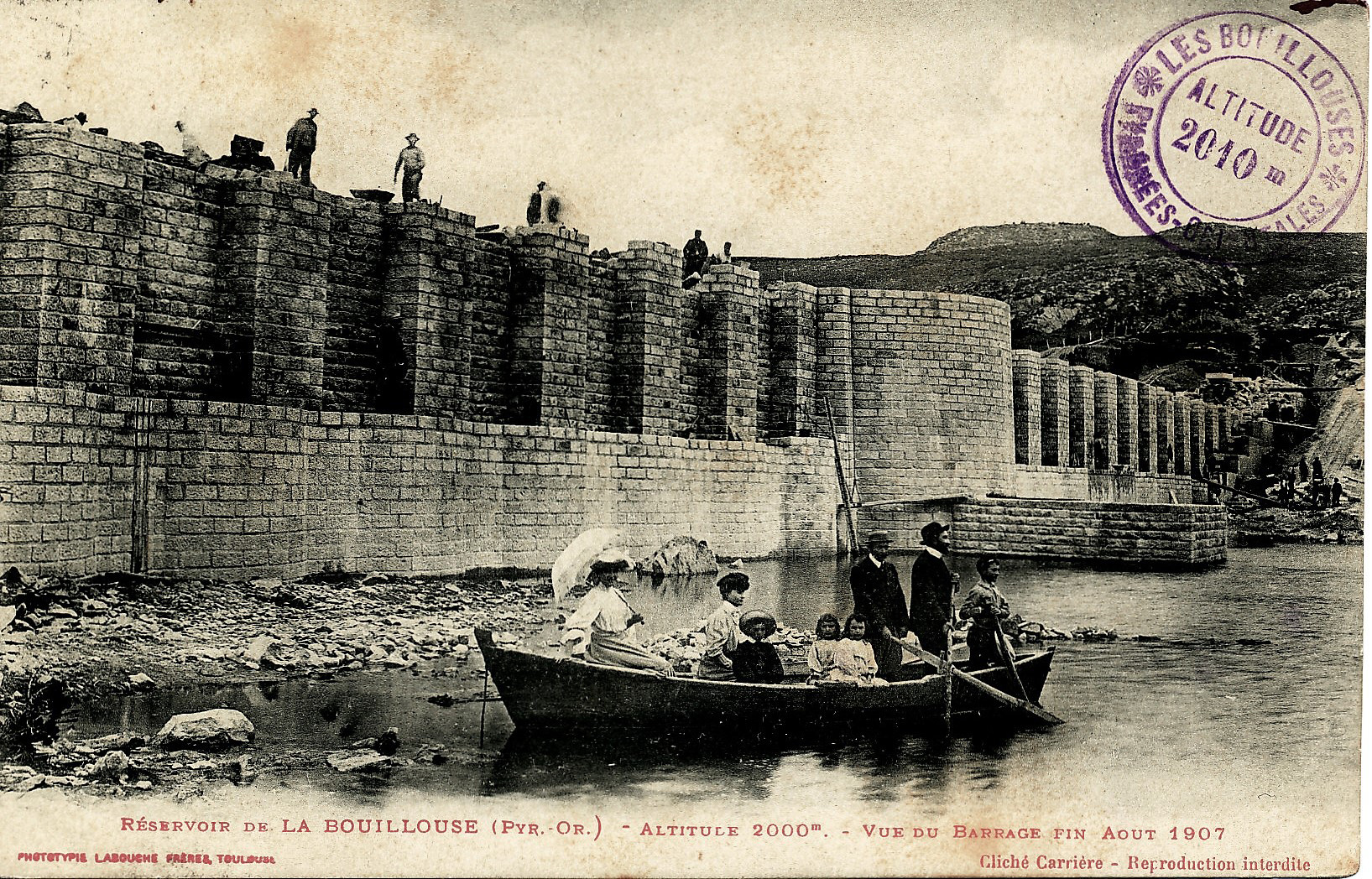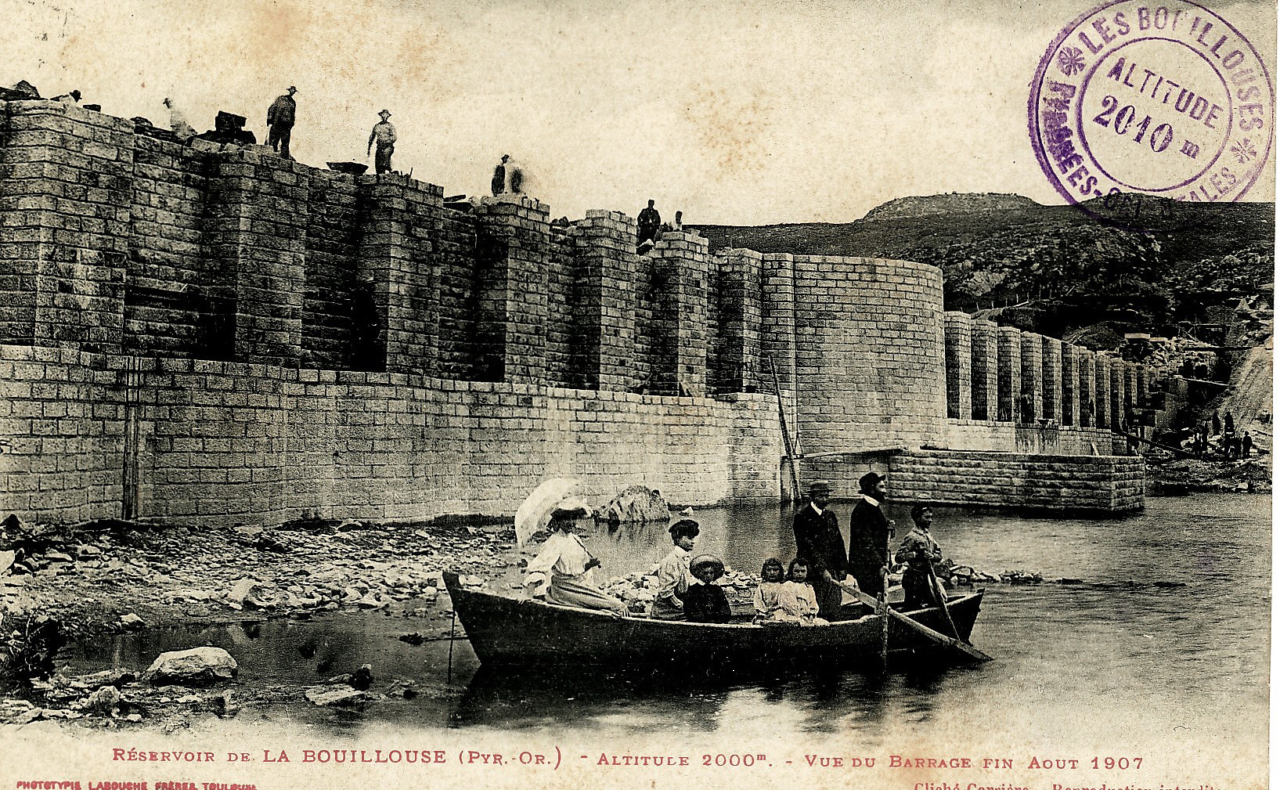“Coup de filet aux Bouillouses” memories
« My first ascent of the dam dates back to 1952, when I was in a ” colo ” at Font-Romeu and we hiked up to the dam via the 3 lower lakes. I was 12 years old. Since then, I’ve not only worked there, but also fished and skied. Indeed, when we were ski-touring down from Lac le Soubiran at the foot of the Carlit, we crossed the frozen lakes and ended up at Les Bouillouses. That’s not what I’m going to tell you about, but rather a railway worker anecdote involving no rails or sleepers or Z 201 or 202, like so many others I have.
Since 1970, I’d been working on the LAC (Ligne Autonome de Cerdagne), and it was now the end of 1973.
The weather was snowy, you just had to sniff the air to feel it. Night had fallen. Only a lamp with a green shade left its mark on my desk. Outside, the platform of the Mont-Louis-La Cabanasse train station was lit by the halo of the street lamps. Lower down, La Cabanasse and its lights. Not a sound. I love these moments when, in this studious atmosphere, I can update a few files, certain that no one from any department in Béziers will make an unexpected appearance.
Wrong, the phone was ringing.
At the other end, the Mont-Louis Gendarmerie Commander, M. with whom I had a very good relationship. He knew what I was like. “ Have you got your car ? ”. In reply to my affirmative answer, he said ” |Come up ” and, when I understandably asked why, he replied laconically “Get a move on, I’ll explain later “. I entered the Gendarmerie, was invited to go to the back, and saw two officers with MATs in their hands, machine guns I’d come across in Algeria during my military service.
” You’re going to war ? “, followed by ” You’re coming with us, I’ll explain on the way, we’re going up to Les Bouillouses “.
To explain : the District was responsible for maintaining the buildings of the SNCF Holiday Centre, located in Les Bouillouses, a centre made up of various buildings left over from work to raise the dam and new constructions for the camp. Also still there were the former residences of the two village guards who’d lived there for many years, including A. P. He now lived there only in summer with his wife, who over the years had created a hotel-restaurant much loved by fishermen and walkers.
The establishment was closed in winter, and A. P. had come up from Mont-Louis for one reason or another. He spotted light in one of the buildings, a wooden dormitory sheltered in the trees, took a look around, noticed ” individuals ” and notified the Gendarmerie..
Their intervention was prompted by the fact that, according to M., roving drug labs and counterfeit money factories would set up shop and didn’t stay in one place for long.
The three cops, A P and yours truly headed for the building. The two armed policemen stood on either side of the glass door. , M. with his hand firmly positioned on his weapon, knocked…
A.P. and I stayed out of the way, as our railway culture hadn’t trained us for this kind of thing.
A young man appeared, lamp in hand, and opened the door (locked by bolts). They were three Catalan hikers who’d planned the Carlit trip for the following day, and who, having failed to find the Club Alpin shelter, which was poorly signposted, had managed to get in through a poorly-closed fanlight. They’d settled in. In one of the rooms, they collected blankets from the beds in the building used as a dormitory in summer. Nicely ” ensconced ” and sheltered, they’d boiled water to prepare some mixture popular among hikers.
Outside, a few snowflakes were swirling around.
A short discussion between M. and A. P. led us, after collecting their identities and warning our three mountaineers that another visit would be made later, to let them sleep there.
We returned to A.P.’s place, where he offered us a drink.
A vehicle stopped.
C.‘s taxi from Mont-Louis brought three passengers. Catalans themselves, they were also considering the Carlit the following day, but were planning to camp. They asked about the best sheltered spot. A. P. told them.
A quick look with M. The only decent thing to do was suggest they join their compatriots. M. got their identities and took them to the dormitory.
Our good deed for the day was done. The beer was cold.
This was my only act of war in my life. And I’m delighted. “
Dunyach Joanpere
District Manager from 1970 to 1974
Interview with Joanpere Dunyach to find out more about his career : “ Back then, it was called Ligne Autonome de Cerdagne « LAC ». The SNCF’s regional head office was in Marseille. There were 4 “arrondissements”, including ours in Béziers and a section in Perpignan. This covered the whole department except for the Cerdanya line. The depot manager was responsible for everything from Villefranche-de-Conflent to Latour-de-Carol, and the workshop had almost 150 workers (painters, turners, milling machine operators, electricians…).
I was responsible for the track, 63 level crossings, 600 engineering structures … both large and small. There are some magnificent viaducts that no one has heard of out in the wild.
I also looked after the buildings and the SNCF Holiday Centre at Les Bouillouses. The Bones Hores were built for the 1968 Olympic Games (Mexico City). This is also where they created the Lycée Climatique for athlete training.
Then, in 1975, I was attached to the Perpignan section when the LAC’s autonomous management was broken up. ” »


Récit Souvenir
